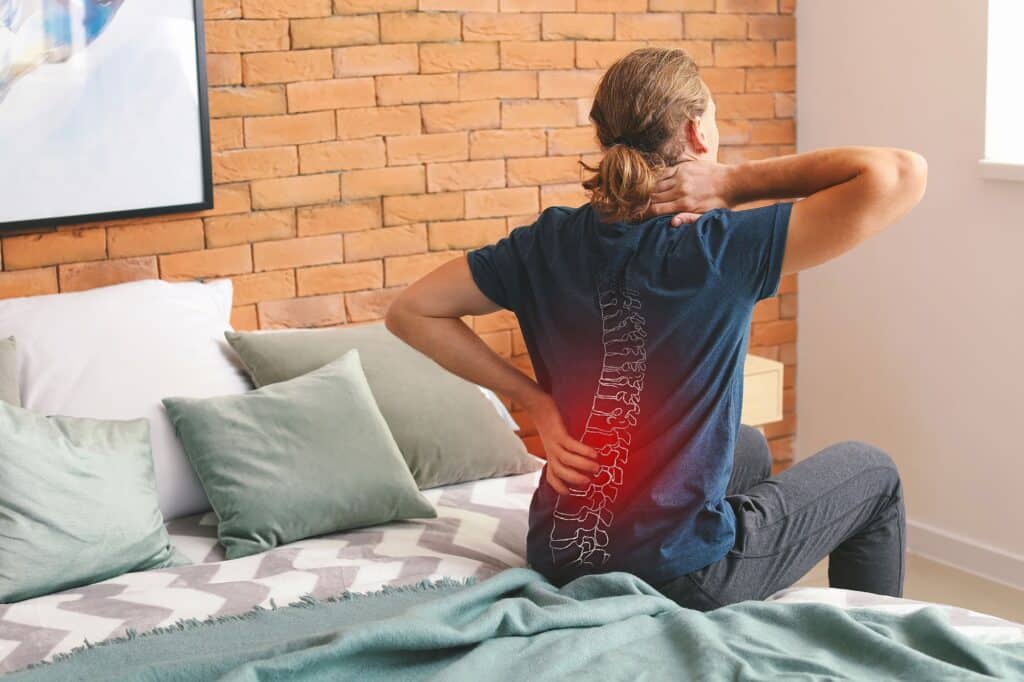For week 3 of the NSC’s National Safety Month, we’re continuing our blog series with an important topic for all employers, regardless of industry: chronic pain.
Chronic pain remains a serious issue for a large number of workers across the country. Some 100 million Americans experience chronic pain, making it the leading cause of disability and disease burden not just in America but around the world. Equally important are the demographics associated with chronic pain, particularly employees over 65 years old, two-thirds of whom experience chronic pain on a regular basis. With the workforce, in general, getting older, pain is likely to remain an area of major concern for safety leaders well into the future.
DORN has spent decades researching the causes of pain and developing cutting-edge solutions to help employers curb pain levels among their workers, which we detailed in our white paper, Addressing the Psychological and Secondary Effects of Pain.
The consequences of chronic pain
Chronic pain is a consequence in and of itself, caused by a range of factors we’ll explore shortly. First, though, it’s important to recognize that pain also has ripple effects in the workplace and beyond that can severely diminish an employee’s productivity and quality of life.
First, chronic pain is a major driver of mental health problems. According to data from Harvard Medical School, people who regularly experience ongoing physical pain are as much as three times more likely to be diagnosed with depression or anxiety, and that group is also twice as likely to attempt suicide than people who don’t live with chronic pain. Too often, chronic pain leads to use of prescription pain medications, including opioids, which are misused by up to 29% of people suffering long-term pain. This contributes to the nation’s already devastating opioid crisis and adds considerable financial risk for employers and their workers’ compensation budgets.
Meanwhile, chronic pain also comes with significant secondary effects and physical consequences that can exacerbate common psychological challenges. Workers experiencing chronic pain are more likely to suffer an acute injury on the job and are also at greater risk of ergonomic injuries such as strains, sprains, and other injuries related to overexertion of soft tissues. Injuries to workers already suffering from chronic pain tend to be more severe and require more time away from work for recovery.
For employers, that means greater risk of budget-draining claims and lost work days, reflected in the $635 billion spent by employers in the U.S. each year on chronic pain alone—more than cancer, diabetes, and heart disease together.
The causes of chronic pain
Chronic pain can stem from a range of influences, and its causes are as interrelated as its consequences.
Ergonomic factors behind chronic pain include overexertion, poor workstation design, outdated equipment, and poor individual conditioning. Simply working at a computer without an ergonomic desktop setup can lead to chronic pain. Likewise, regular actions used by employees completing their usual tasks can accumulate and contribute to chronic pain—repetitive strain injuries such as carpal tunnel often come with ongoing pain even after the main injury has healed.
Sadly, the circumstances that followed the COVID-19 pandemic only made the world’s chronic pain problems worse. Too many workers were forced to change work environments—either moving to their homes or working in spaces that had been radically adjusted to account for social distancing—and the resulting strain on workers’ bodies and minds has increased chronic pain rates at a time when stress levels were already sky-high.
So what should employers do to fight chronic pain?

In our experience, physical and psychological safety go hand-in-hand and addressing one will often help improve the other as well. Here are a few key areas of investment that can help employers looking to curb pain levels among their employees.
- Preventative ergonomics
Nothing impacts worker pain levels as much as ergonomics. So much of the worker’s everyday experience involves how they interact with their surroundings, their workstations, and their equipment. Safety managers should concentrate on improving ergonomics through in-person or virtual workstation assessments, active ergonomic monitoring, and technology-based tools such as desktop ergonomics software.
- Worker wellness and conditioning
All jobs require physical ability to some extent, even those that are entirely based on laptops or desktop computers. Strength, flexibility, and conditioning programs can be especially useful for front-line employees in manufacturing, warehousing, transportation, and other industries, but these solutions are also powerful when applied to office workers and other staff. DORN provides a range of conditioning services, including virtual solutions that allow workers to train and improve their overall wellness from home.
- Pain relief therapies
Hands-on pain relief really has no replacement in the world of workplace safety—it’s difficult to eliminate work-related pain entirely, but it’s always possible to provide relief for affected employees. Skilled providers, such as those who run DORN’s on-site PainFree therapies, can target specific risk factors for pain and help alleviate the effects without waiting for the pain to become a serious injury. It’s also possible to train employees to care for their own pain symptoms even from home, using solutions such as DORN’s Self-Care Plus.
Ultimately, chronic pain presents as great a psychological risk as it does a physical one, and employees with comprehensive support against pain are more likely to continue doing their jobs happily. With proactive ergonomics, wellness training, and hands-on pain relief, employers can ensure that their workers can perform at a consistently high level without risking greater injuries, negative mental effects, or lingering problems with focus and productivity.




